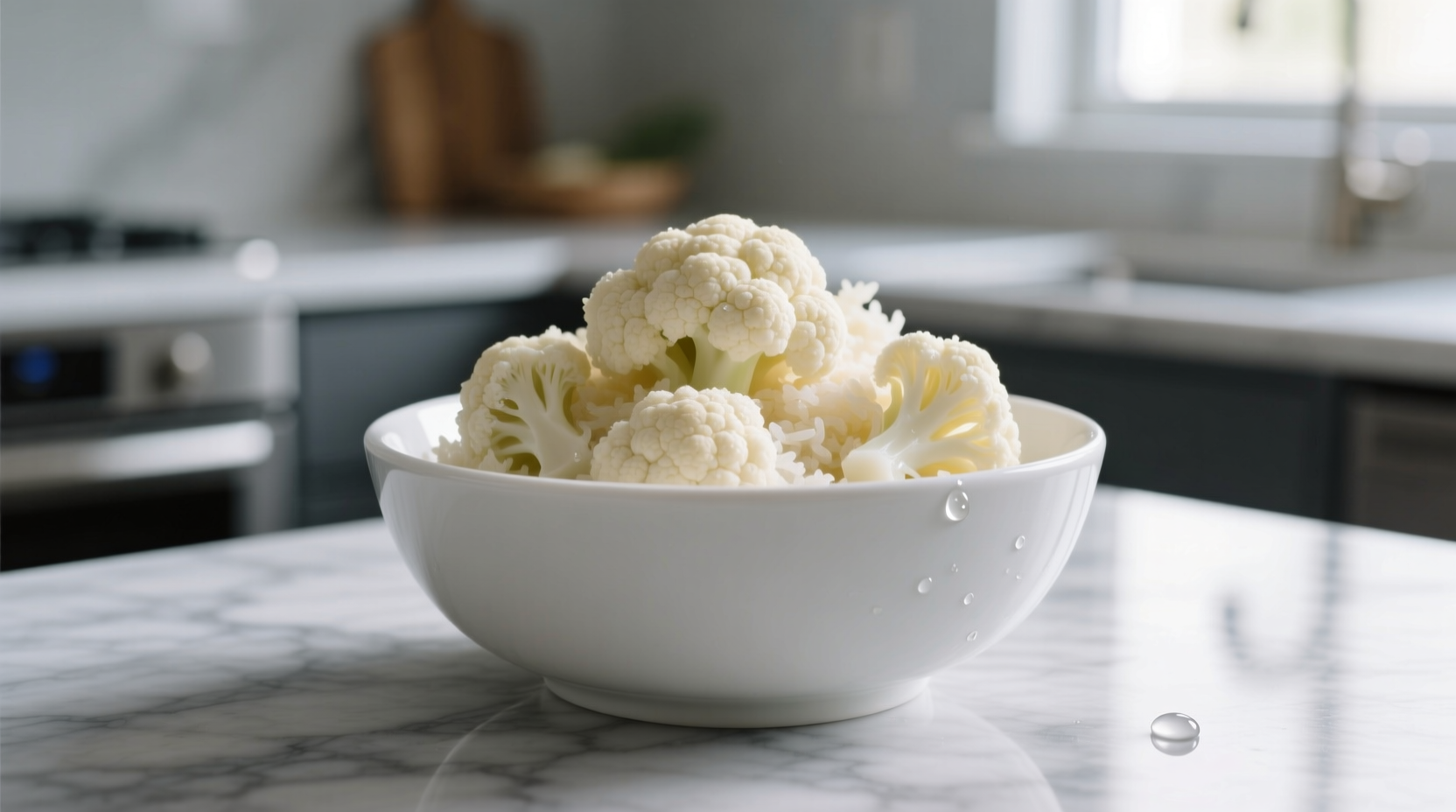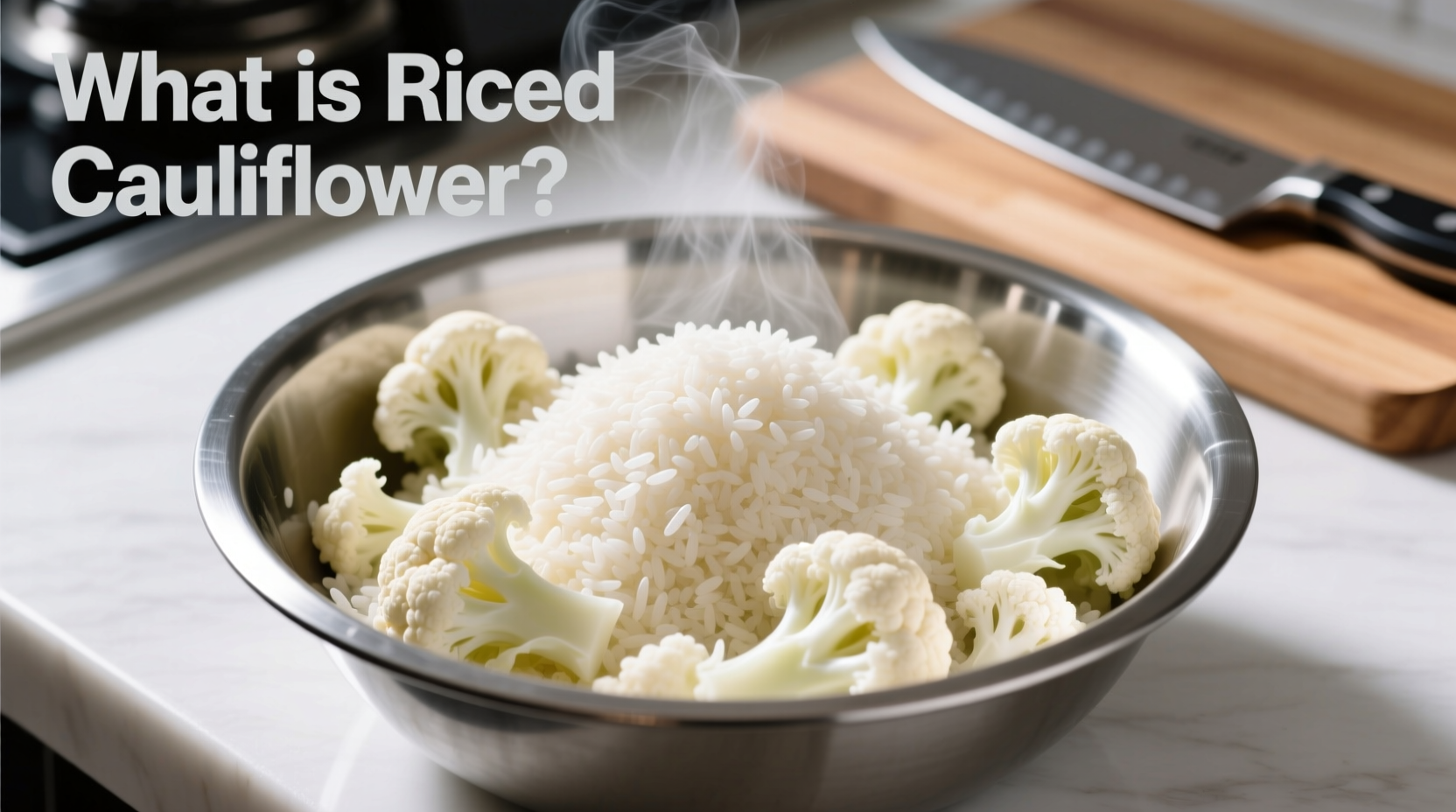Have you noticed riced cauliflower appearing everywhere—from grocery store produce sections to restaurant menus and social media recipes? This simple kitchen innovation has transformed how health-conscious cooks approach carbohydrate alternatives. Whether you're managing blood sugar, reducing calories, or simply adding more vegetables to your diet, understanding what riced cauliflower really is and how to use it properly can make a significant difference in your cooking success.
What Exactly Is Riced Cauliflower?
Riced cauliflower isn't actually rice at all—it's regular cauliflower that's been broken down into tiny, rice-like pieces through either manual grating or specialized food processing equipment. The result resembles uncooked white rice in both appearance and texture, making it an excellent visual and functional substitute in many recipes.
Unlike traditional rice, which comes from cereal grains, riced cauliflower provides a vegetable-based alternative that maintains cauliflower's nutritional profile while offering remarkable culinary versatility. When properly prepared, it delivers a mild, slightly nutty flavor that readily absorbs seasonings and complements various cuisines.
How Riced Cauliflower Is Made: Two Simple Methods
Creating riced cauliflower requires just one ingredient and minimal equipment. You can prepare it using either of these approaches:
Food Processor Method (Most Efficient)
- Cut fresh cauliflower into florets, removing tough stems
- Place in food processor in batches
- Pulse 10-15 times until reaching rice-like consistency
- Avoid over-processing, which creates cauliflower mash
Box Grater Method (No Special Equipment Needed)
- Use the medium holes of a box grater
- Grate cauliflower florets directly over a bowl
- Rotate florets to maintain consistent size
- Yields slightly larger "grains" than processor method

Nutritional Benefits Compared to Traditional Rice
Understanding the nutritional differences explains why riced cauliflower has gained such popularity among health-conscious eaters. The following comparison shows why many nutritionists recommend it as a smart substitution:
| Nutrient | Riced Cauliflower (1 cup cooked) | White Rice (1 cup cooked) | Brown Rice (1 cup cooked) |
|---|---|---|---|
| Calories | 25 | 200 | 215 |
| Carbohydrates | 5g | 45g | 45g |
| Fiber | 2g | 0.6g | 3.5g |
| Protein | 2g | 4g | 5g |
| Vitamin C | 52mg (87% DV) | 0mg | 0mg |
| Vitamin K | 16mcg (20% DV) | 0mcg | 0mcg |
Data source: USDA FoodData Central
Practical Cooking Applications
Riced cauliflower works well in numerous dishes, but understanding its limitations prevents cooking disappointments. Unlike traditional rice, it contains significant moisture that requires special handling:
Best Uses for Riced Cauliflower
- Fried "rice" dishes - Sauté with minimal oil to evaporate moisture
- Burrito bowls - Provides texture without excessive sogginess
- Stuffed peppers or tomatoes - Holds shape better than expected
- Casseroles - Works as partial rice substitute (50/50 mix)
- Baby food - Nutrient-dense alternative to rice cereal
Contextual Limitations to Consider
Riced cauliflower isn't a perfect substitute in all applications. Food science research from the USDA National Institute of Food and Agriculture shows that its high water content (92% versus rice's 70% when cooked) creates specific limitations:
- Doesn't work well in soups or stews (becomes mushy)
- Not suitable for sushi preparation (lacks stickiness)
- Loses texture when frozen and reheated multiple times
- Requires moisture management in baked dishes
Proper Storage Techniques
Understanding storage requirements prevents waste and maintains quality. According to food safety guidelines from the FDA Food Code, fresh riced cauliflower:
- Lasts 3-4 days refrigerated in airtight container
- Should be stored with paper towel to absorb excess moisture
- Freezes well for up to 3 months (spread on baking sheet before freezing)
- Never leave at room temperature more than 2 hours
Cooking Tips for Best Results
Professional chefs consistently emphasize these techniques for optimal results:
- Dry thoroughly - After processing, spread on clean kitchen towel for 10 minutes
- Cook in batches - Overcrowding causes steaming instead of sautéing
- Use high heat - Medium-high heat evaporates moisture quickly
- Add moisture last - Incorporate sauces after cauliflower is cooked
- Season aggressively - Cauliflower needs more seasoning than rice
Why Riced Cauliflower Has Gained Popularity
Market research from the IBISWorld Food Industry Report shows riced cauliflower sales have increased by 247% over the past five years. This growth stems from several converging trends:
- Rising interest in low-carbohydrate eating patterns
- Increased awareness of vegetable-based alternatives
- Convenience of pre-riced options in grocery stores
- Adaptability across multiple dietary approaches (keto, paleo, gluten-free)
- Cost-effectiveness compared to other specialty rice alternatives
Common Mistakes to Avoid
Based on analysis of cooking forums and recipe reviews, these errors frequently undermine success with riced cauliflower:
- Skipping the moisture removal step before cooking
- Using too much oil during preparation
- Expecting identical texture to traditional rice
- Over-seasoning with strong spices that overwhelm mild flavor
- Using frozen riced cauliflower without thawing and draining first
Simple Preparation Guide
Follow this professional chef-tested method for perfect riced cauliflower every time:
- Process or grate 1 medium head cauliflower
- Sprinkle with ½ teaspoon salt and let sit 10 minutes
- Press firmly with paper towels to remove excess moisture
- Heat 1 teaspoon oil in non-stick skillet over medium-high heat
- Add cauliflower in single layer (don't overcrowd)
- Cook undisturbed for 3-4 minutes until bottom develops light color
- Stir and cook 2-3 more minutes until tender but not mushy
- Season with ¼ teaspoon garlic powder and black pepper to taste
Conclusion
Riced cauliflower offers a versatile, nutrient-dense alternative to traditional rice that fits numerous dietary preferences. By understanding its unique properties and preparing it properly, you can enjoy this vegetable-based substitute without the common frustrations many home cooks experience. The key lies in managing moisture content and adjusting expectations about texture—when done correctly, riced cauliflower becomes a valuable addition to your culinary repertoire that delivers both nutrition and satisfaction.











 浙公网安备
33010002000092号
浙公网安备
33010002000092号 浙B2-20120091-4
浙B2-20120091-4